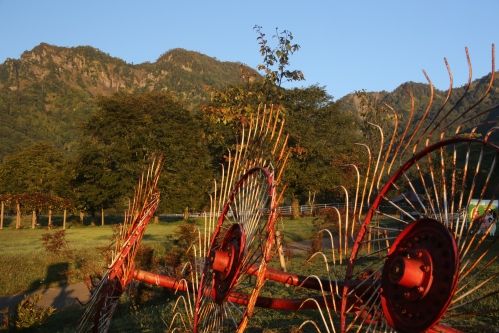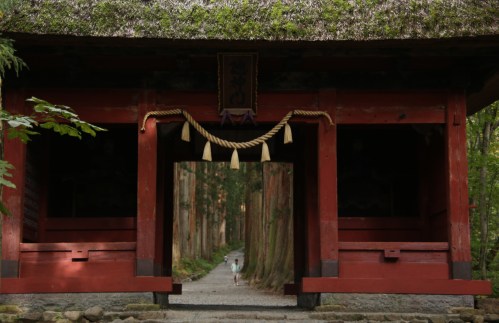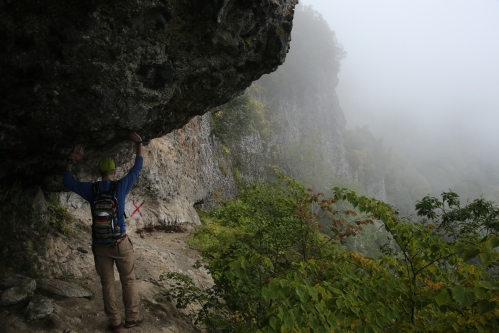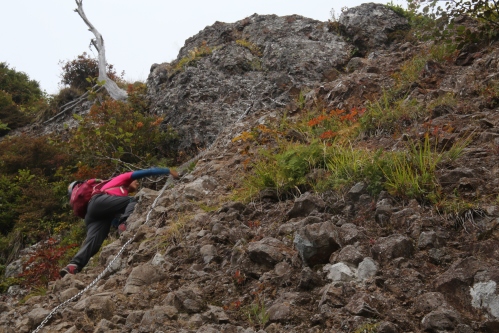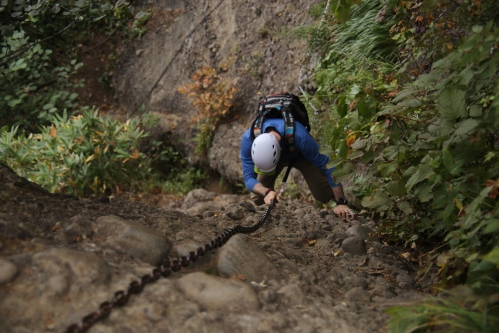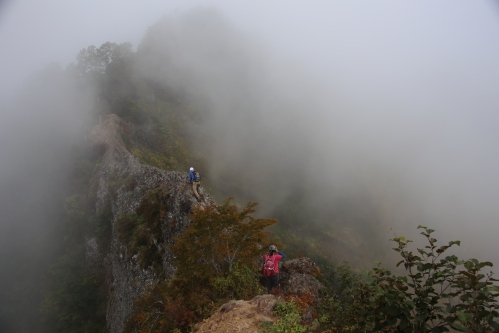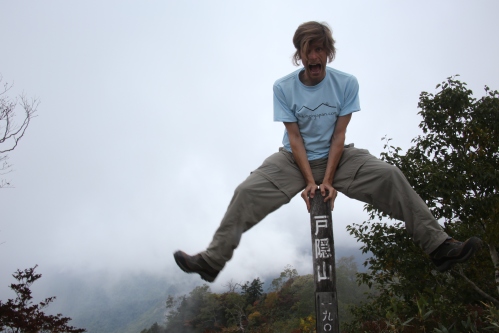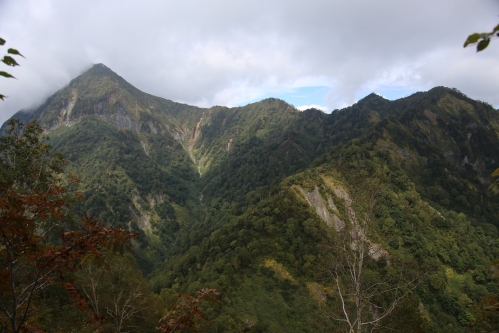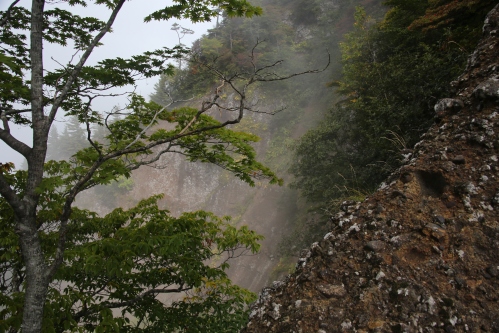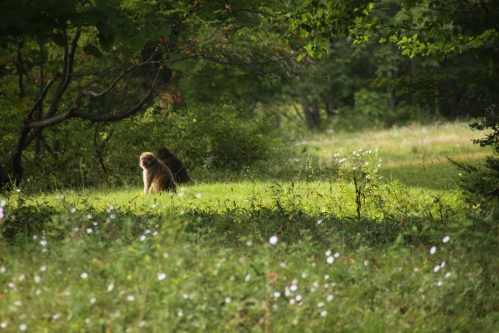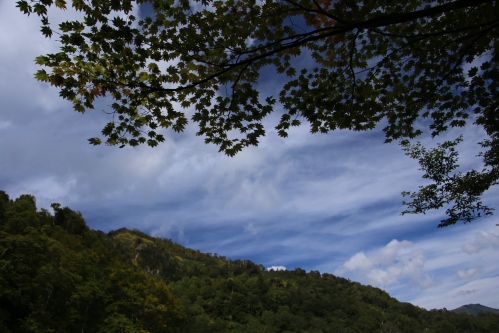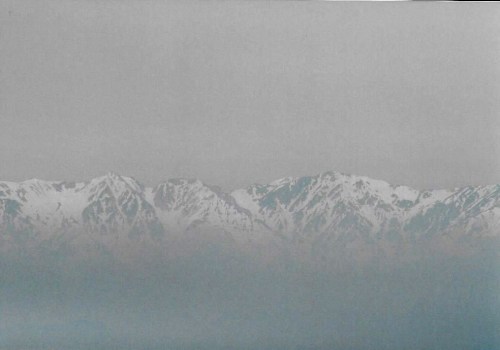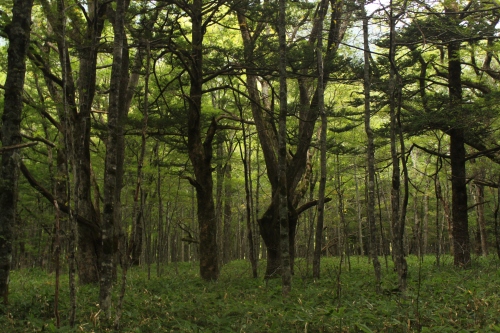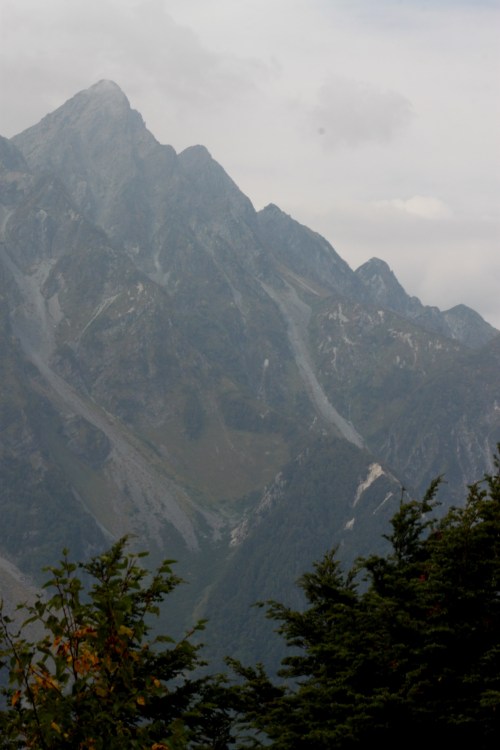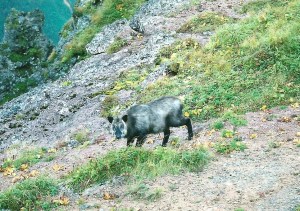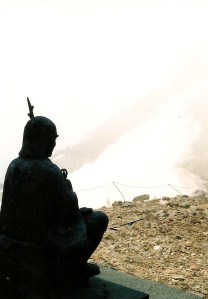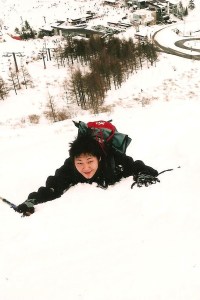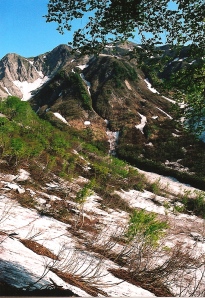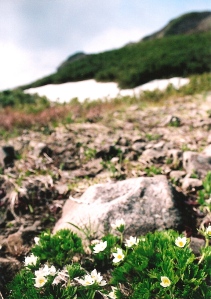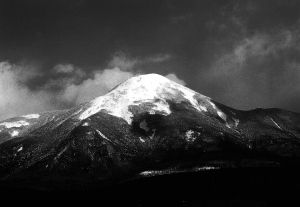Snow country. The land that gets up to 20 meters of snow in a single season. So why is the ground bare, looking closer to late April than the height of winter? Could this be the new norm? The ski resort owners sure hope not. Visitors to Hakuba are a fraction of what they normally are, and the locals cannot recall a time when there was such a scarcity of snow in late January. What am I going to do with these snowshoes?

So are the questions I am left with upon my latest inquest into Minami Otari village in northern Nagano. My last trip here was during the brilliance of the autumn foliage, but now everything is a tepid hue of brown, fallow fields just calling out in desperation for a warm coating of fresh snow. Paul D. lives high up in an isolated tract of land just steps away from the mountain wilderness. Bears are a frequent sight, especially in the unusually warm autumn, when the persimmon tree directly in front of his house played host to a bear feasting on the mother lode. The woven net of the ursine feeding platform is all that remain in the upper branches, while a series of claw marks down the main trunk of the tree give further proof that this is prime black bear habitat.

An evening of festive revelry ensues over the steam of the spicy hotpot, with fellow mountaineers engaged in a fierce match of name-that-tune that spans decades of sonic wisdom. We all retreat to our sleeping quarters shortly after midnight, grasping extra wool blankets to stave off the chill. Morning comes much too quickly in these parts, and after a quick breakfast of hot sandwiches we pile into Naresh’s car for a short hike into the backcountry. Paul informs us that it is a steady hike of 2 hours to reach the ridge line, where panoramic views await all that put in the effort.

A modest base of 50 centimeters covers the shoulder of the road as we strap on the snowshoes, following a set of backcountry ski tracks as they wind their way up a lonely forest road. The Kita Alps are draped in early morning cloud in an otherwise brilliant dome of crystal blue skies. With hardly a breeze to be felt, we strip down to our base layers as the sweat begins to trickle down our temples. We each settle into our own pace, some chatting while others fixated on the soft light filtering through the bare canopy above. Often times I tune out everything all together, reaching what I call a ‘tozan trance’ and focus only on the synchronization of my footfalls and trekking poles working in unison. I can cover a lot of ground if left to my own devices, but with 5 others in tow I snap out of my zone and soon allow the others to catch up.

We eventually catch up to the group of skiers, who are indulging in a leisurely break about halfway up the peak. A local group led by the village soba shop owner, we chat briefly before pushing on further up the ever-steepening spur towards the ridgeline. Hisao informs us in the morning that he would like to be on the road by 2pm, but it is lunchtime by the time we do breach the ridge, where panoramic views from the summit plateau of Mt Ōnagi send us screaming for joy. Hisao abandos his plan for an early start on the highway in favor of taking in the incredible scenery set out before us.

Mt Amakazari rises abruptly from a valley just below us, looking absolutely breathtaking when cloaked in wintry white. To her right, Mt Tenguhara’s broad flank dominates the ridge, blocking out the rotund forms of Yakeyama and Hiuchi beyond. Continuing clockwise, the unmistakable bulbous knuckle of Mt Myōko pokes it head out to say hello, while further along the unobstructed view both Takazuma and Togakushi dominate the eastern horizon directly opposite our vantage point. And these are just the meizan in the immediate vicinity, for to the west lie the mighty peaks of the North Alps, with Yari looking truly in-spire-ing from our unobstructed perch. Although Kashimayari and Goryū are playing hard-to-get, Shirouma, Yukikura, and Asahi stand proudly, flexing their snow-capped muscles in the bluebird mid-winter skies. Up here, away from the mild temperatures of the valleys below, we walk on a 2-meter base of snow, mesmerized by the shimming waters of the Sea of Japan coastline due north.

The summit is home to a modest emergency hut with an observation deck on the roof. We take turns jumping off the roof into the deep powder, feeding off the adrenaline rush of free falling briefly before sinking into our soft cushion of snow. The structure takes on a much different feel from the summer season, appearing at just a fraction of the height due to the snow accumulation. We easily loiter on the summit for an hour, basking in the sun and truly appreciating such weather that only comes a few times a winter. The walk back down to the car is most exciting, for the snowshoes allow us to create our own paths through the deep snow while crisscrossing the various ski and snowboard tracks down the softened southern face. We reach the car shortly after 3pm and are still on a high from the enthralling scenery above.

Mt Ōnagi may not appear on any list of venerable mountains, but it has won a place in our hearts. It just goes to show you that you need not be bound by compilations of famous mountains and ‘must climb’ peaks dictated by others. Simply look at a map, find a knowledgable local, and hit the trails in search of Japan’s hidden beauty.

